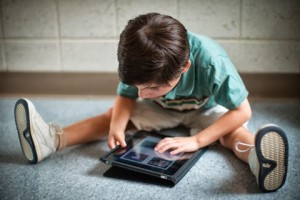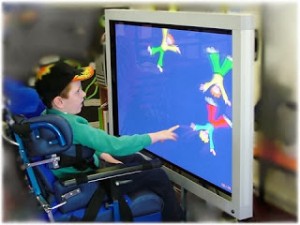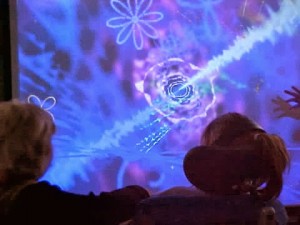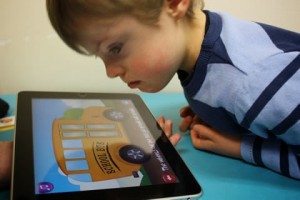
So here’s the thing… I’m sat in a quiet classroom with six students all busy using some of the cause and effect apps I’ve been recommending over the last six months. Everyone is busy doing their own thing. The students are touching the iPad screen and generating wonderful patterns and sound effects with the movement of their fingers. They are looking, listening and in some cases responding with smiles and sounds.
So why do I feel so uneasy, after all, I’m sat in a quiet classroom and everyone is busy doing their own thing.
My mind can’t help but wander back a few years to another classroom and another group of students exploring cause and effect. On the surface, nothing too different from the other classroom here, students making things happen by touching screens or pressing switches in response to the gentle encouragement of those around them.

What is different however is how the people in the classroom are responding to the effects the students are generating. People are singing and dancing to the music the student has initiated… My TA is pretending to be afraid of what’s behind the spooky door… I’m falling off my chair in pretend shock every time my student pops a balloon… There’s laughter and lots of interaction between the students and those around them.
While I’m a strong supporter of iPads and the very personal experience of cause and effect they can bring to our students, I do worry that by using them in specific ways, we run the risk of losing the ‘social element’ of cause and effect.
Social element?

You’ve seen the singing hippopotamus activity I made for Priory Woods School and many of you know that I made it for a young man who really wasn’t interested in singing hippopotamuses. He, like many of our students responded best to interaction with people. My singing hippo provided a vehicle for him to initiate interaction with the folks around him. He pressed the switch… people sang, danced and had fun. What better way could there be for him to explore and consolidate his understanding of cause effect?
He wasn’t (isn’t) unique. Very many of the students I work with show only fleeting interest in the images and sounds they produce by using touch screens or pressing switches. Most are much more interested in the response of the people around them to what they have done. For example, my TA being ‘afraid’ of what is behind the spooky door or me pretending to fall off my chair in shock at the popping of an on-screen balloon.

My definition of cause and effect has always been; “extending influence and control over the student’s immediate environment” and for me that means more than making pretty patterns on a device that’s a foot from my student’s face. To experience cause and effect is to experience communication and for human beings that means interacting with people. What does it matter that you can touch a screen to make a pretty pattern if there is nobody there to share it with… to respond positively to what you have done and to reinforce and celebrate your attempts at communication?

iPads provide us with a wonderful new tool to explore cause and effect with our students but we mustn’t forget the social element of what we’re doing. With a device designed to provide a very personal experience it can be easy to forget about what’s really important for the student… and that’s your and other’s response to what they are doing with the device.
Cause and effect IS communication and it’s important. So important it’s at the centre of all we do…
Information COMMUNICATION Technology
